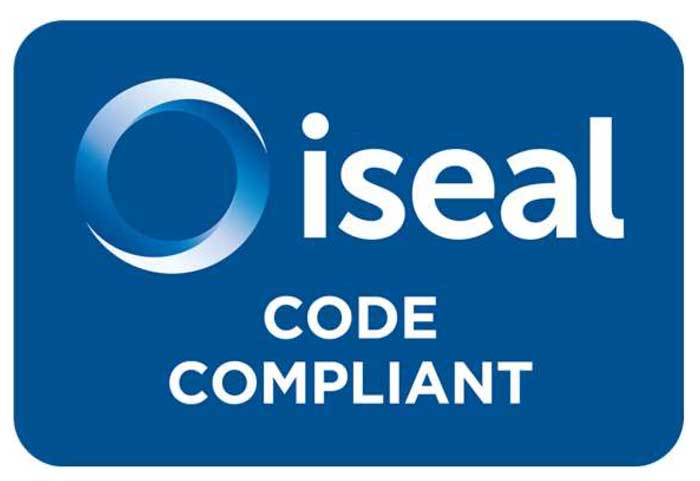Updated certified material flows with 2024 Chain of Custody data
The expanded pool of CoC Certified Entities in 2024 was driven mostly by downstream companies, with only four upstream producers joining the program: one refinery, one smelter, one smelter with casthouse, and one bauxite mine with refinery.
In terms of global production (using IAI’s material flow modelling), in 2024, ASI Performance and Chain of Custody Certified Entities produced ASI CoC Material in the order of 29% of global bauxite, 17% of alumina, 8% of primary aluminium, 2% of semi-fabricated products, and sourced Eligible Scrap in the order of 2% of pre-consumer scrap, and 18% of post-consumer scrap. ASI Aluminium was in 2% of the aluminium used in manufactured goods.
This reflects a gradual strengthening of material flows downstream, even though demand remains below the supply potential from upstream production.
The visualisation is now available on the updated CoC Material Flows diagram.
Bauxite Production
In 2024, bauxite production from CoC Certified mines accounted for approximately 29% of global production, an increase from the previous year (see Figure 1.), reflecting one new CoC Certified mine.

Figure 1: Bauxite production from CoC Certified Entities increased by 16% compared to 2023.
Alumina Production
Alumina flows from CoC Certified Entities declined by 5% (see Figure 2), continuing the downward trend observed since ASI Alumina levels peaked in 2021. While most Entities certified before 2024 reported higher alumina volumes, one recorded a reduction. Additionally, one Entity closed its smelter operations during the year reducing the inflows of ASI Alumina to the CoC system. At the same time, four certified Entities contributed ASI Alumina volumes for the first time.

Figure 2: The flow of ASI Alumina from CoC Certified Entities continues to decrease year after year, having a peak in 2021, representing 17% of global alumina production.
Primary Aluminium production
Flows of ASI Primary Aluminium in 2024 increased by 2% compared to 2023 levels (see Figure 3). This represents a slowdown in growth, following a stronger 11% increase recorded between 2022 and 2023. Most CoC Certified Entities reported higher primary aluminium flows, while two reported decreases. Two other Entities that had reported in previous years recorded zero flows in 2024, including one smelter that closed.

Figure 3: Flows of ASI Primary Aluminium increased by 2% year on year.
Scrap Flows
Scrap flows show contrasting trends. Reported Pre-Consumer Scrap flows declined by nearly 2%, while Post-Consumer Scrap increased significantly to 4525 kt (see Figure 4). Globally, 18% of post-consumer scrap is produced now under ASI Performance Standard and Chain of Custody Standard, while pre- and post-consumer scrap together equals to nearly 12% of production. The growth in post-consumer scrap reflects a positive effort by CoC Certified Entities to expand recycling capacity and sourcing, in line with ASI’s emphasis on due diligence in scrap supply chains.
Note that Pre-Consumer Scrap that is generated and remelted within the same Entity stays in the Entity’s closed loop and is not required to be reported under the CoC Standard, thus it is not included in the visualisation.

Figure 4: Flows of ASI Eligible Scrap inputs increased more than threefold from 1500 kt in 2023 to 4800 kt in 2024.
Manufactured Goods
The flow of ASI Aluminium into manufactured goods increased to 1547 kt, compared to 555 kt in 2023. Despite the growth upstream, downstream demand does not yet absorb the full volumes available from upstream supply. Instead, downstream flows still demonstrate limited participation of downstream manufacturers in the CoC system. While many downstream companies hold CoC Certification, they often do not actively purchase CoC Material, which limits demand at this stage of the value chain.

Figure 5: Flows of ASI Aluminium in manufactured goods increased nearly threefold.
Conclusion
The 2024 data shows that CoC Material volumes continue to increase, but progress in downstream uptake remains limited. This confirms the ongoing challenge of strong CoC uptake in the upstream production, but limited traction downstream, even as downstream companies are facing growing pressure to demonstrate traceability.
As ASI marks its 10-year anniversary this year, the CoC data collected since 2019 shows a consistent increase in reported material flows across all supply chain stages. Uptake has been strong from the beginning of ASI’s CoC program, particularly among upstream producers, highlighting their commitment to responsible production and sourcing. However, there has been low corresponding pull from downstream, where demand for CoC Material remains limited despite growing expectations for transparency.
As ASI currently undergoes a revision process of its Standards in 2025-27, we will be considering these and similar tensions in the effort of driving sectoral change at scale. If you would like to share your perspective with us, please contact Chinelo Etiaba.
*We sincerely thank the International Aluminium Institute (IAI) for their collaboration and support and all 101 reporting ASI CoC Certified Entities for their positive engagement with this work.
For more information on ASI CoC Material Flows, contact Klaudia Michalska.


